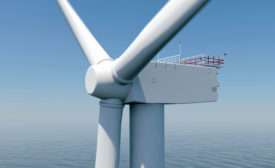Home » Offshore Wind
Articles Tagged with ''Offshore Wind''
Steel in The Water
Startup of First U.S. Offshore Wind Farm Propels Domestic Market
The ambitious Cape Wind project hit a wall after 15 years, but developers see water-based wind boost in the U.S. power mix.
Read More
The latest news and information
#1 Source for Construction News, Data, Rankings, Analysis, and Commentary
JOIN ENR UNLIMITEDCopyright ©2025. All Rights Reserved BNP Media.
Design, CMS, Hosting & Web Development :: ePublishing









